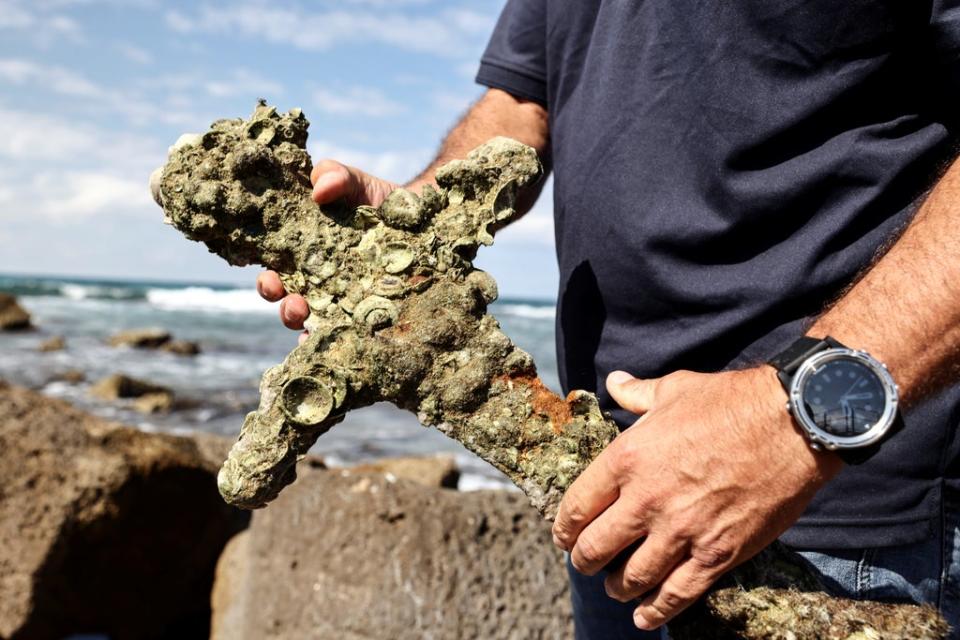Diver pulls 900-year-old crusader sword from bottom of Mediterranean Sea
Watch: Crusader sword recovered from Mediterranean seabed
A 900-year-old sword believed to have belonged to a crusader who sailed to the Holy Land has been found at the bottom of the Mediterranean Sea off the coast of Israel.
The barnacle-covered metre-long blade was discovered by amateur scuba diver Shlomi Katzin on the seabed along the Carmel coast, the Israel Antiquities Authority (IAA) said.
Nir Distelfeld, inspector for the IAA’s Robbery Prevention Unit, said: “The sword, which has been preserved in perfect condition, is a beautiful and rare find and evidently belonged to a crusader knight.
“It was found encrusted with marine organisms, but it’s apparently made of iron. It is exciting to encounter such a personal object, taking you 900 years back in time to a different era, with knights, armour, and swords.”

Crusaders was the name given to those who participated in military expeditions by Christian powers between the 11th and 13th centuries to retake control of the Holy Land, which roughly corresponds with the location of the modern state of Israel.
Shifting sands at the bottom of the sea are believed to have uncovered the distinctive weapon, with its 30cm-long hilt. An ancient stone, metal anchors and pottery fragments were found alongside the sword, which will go on display after it has been cleaned and restored.
The location, a natural cove near the port city of Haifa, suggested it had served as a shelter for seafarers, said Kobi Sharvit, director of the authority's marine archaeology unit.

“These conditions have attracted merchant ships down the ages, leaving behind rich archaeological finds,” he said.
“The Carmel coast contains many natural coves that provided shelter for ancient ships in a storm, and larger coves around which entire settlements and ancient port cities developed.
“The discovery of ancient finds by swimmers and leisure divers is a growing phenomenon in recent years, with the increasing popularity of these sports.
“Even the smallest storm moves the sand and reveals areas on the seabed, meanwhile burying others. It is therefore vitally important to report any such finds and we always try to document them in situ, in order to retrieve as much archaeological data as possible.
“The archaeological finds at the site show that it served as a small, temporary natural anchorage for ships seeking shelter. Identification of the various finds shows that the anchorage was used as early as the Late Bronze Age, 4,000 years ago.
“The recent discovery of the sword suggests that the natural cove was also used in the crusader period, some 900 years ago.”
Eli Escosido, IAA’s general director, praised Mr Katzin for handing over the sword, saying: “Every ancient artifact that’s found helps us piece together the historical puzzle of the land of Israel.
“Once the sword has been cleaned and researched in the Israel Antiquities Authority’s laboratories, we will ensure that it is displayed to the public.”
Watch: This New T. Rex Species Was Potentially Discovered During a Family Vacation

 Yahoo News
Yahoo News 